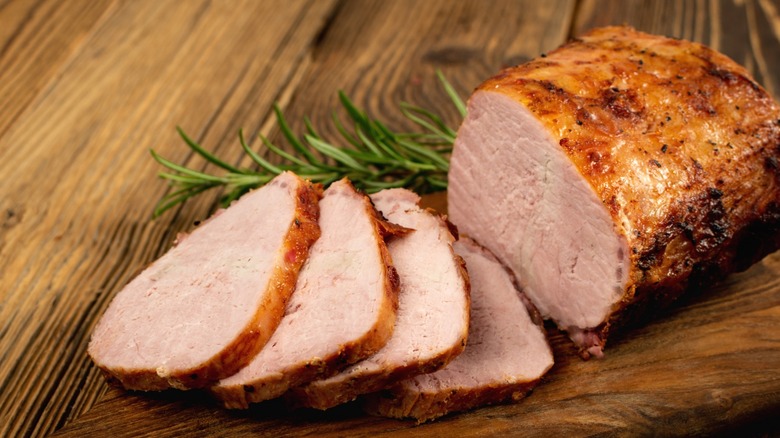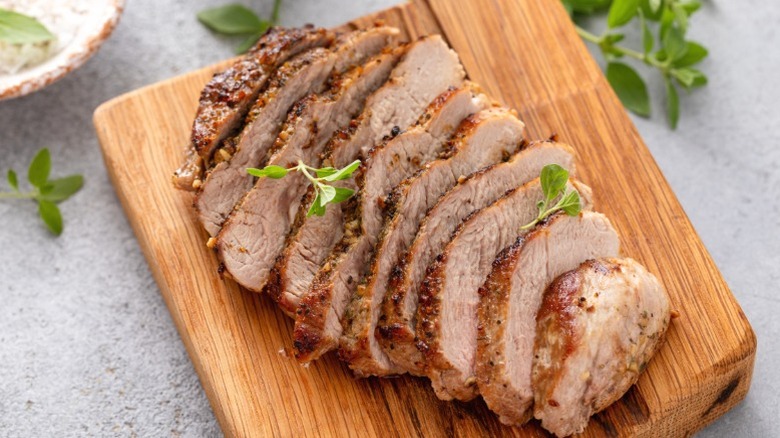For The Crispiest Pork Skin You've Ever Had, Use This Genius Water Hack
There's nothing wrong with a good pork roast. Sure, it may be slightly overshadowed by its beef counterpart — Arby's didn't make their name selling roast pork sandwiches, after all — but whether you're tucking into a delicious Sunday pork dinner recipe or utilizing the leftovers for satiating sandwiches, it's hard to go wrong. But how do you truly elevate the experience, making something compelling and craveable? We asked Marissa Stevens, founder and recipe developer of Pinch and Swirl, and she told us to use one particular method to get beautifully crispy skin: it involves scoring the skin with a knife and pouring boiling water over top before putting it in the fridge.
"Scoring helps fat render and creates more surface area for crisping," Stevens explains. "Pouring boiling water over the scored skin shrinks it slightly and helps start the rendering process before roasting. It's an old-school trick, but it works." That's right — all you need is a knife and a kettle to get shatteringly crisp skin on your pork roast.
It's a good idea to let the pork rest in the fridge
You've probably taken a number of steps for your pork roast already, even without the scoring and the boiling water. You've seasoned it to make it nice and flavorful, trussed it up, and removed the silver skin like any good home cook would. You're probably itching to get it in the oven as soon as possible. But not so fast — Marissa Stevens tells us that it's a good idea to let the roast sit in your fridge overnight once you've poured the water over top.
"Once you've poured the boiling water, you need to dry the skin out again — overnight in the fridge, uncovered," Stevens says. "That final drying step is crucial for getting crackling skin." It's the same principle behind letting other foods, such as breaded chicken or even skin-on fish headed to the grill, spend a period of time in the refrigerator. As for what happens next, Stevens explains: "I season the meat before it hits the fridge, then roast at 450 degrees Fahrenheit to start and reduce to 325 degrees Fahrenheit to finish, depending on cut size."

